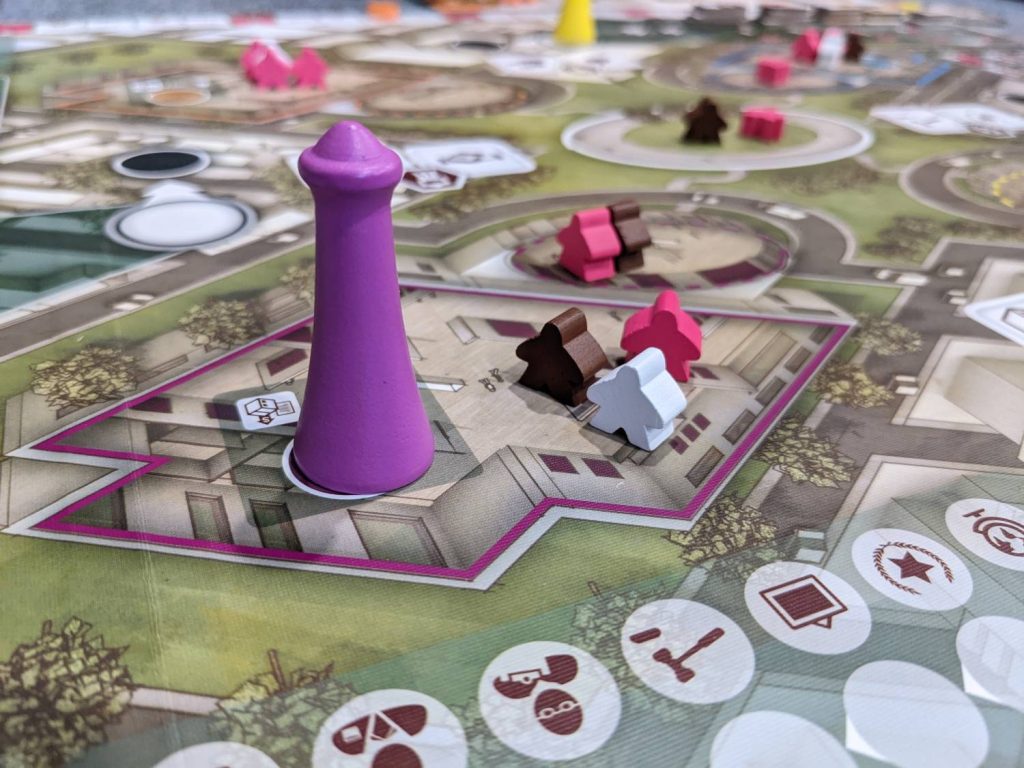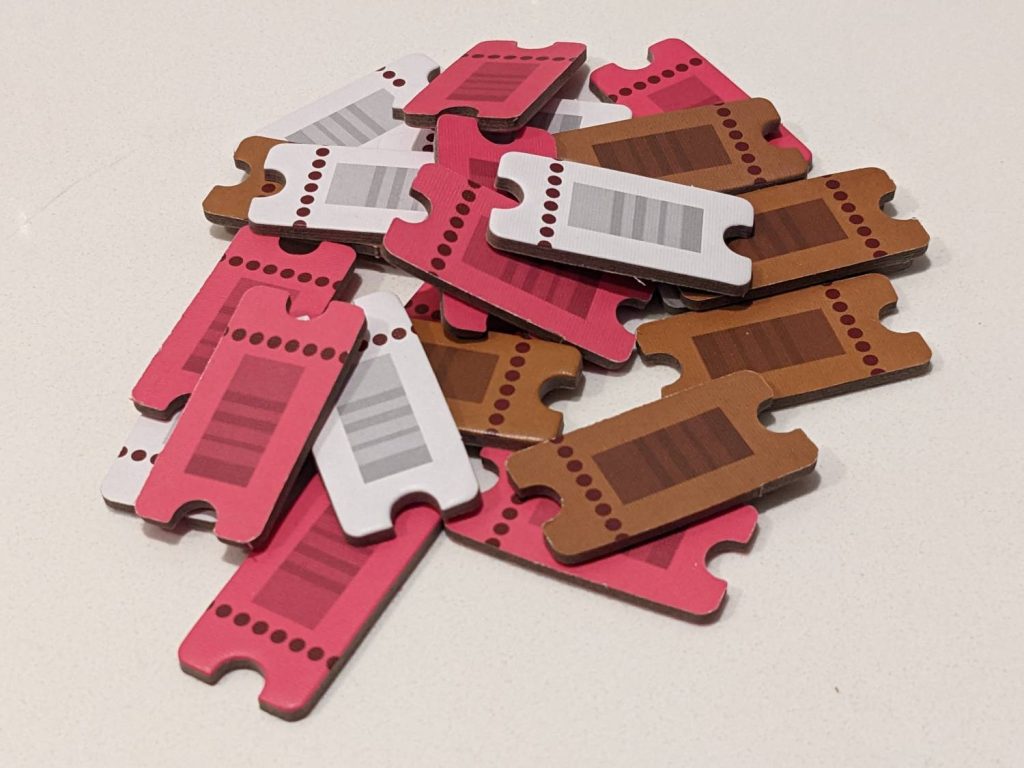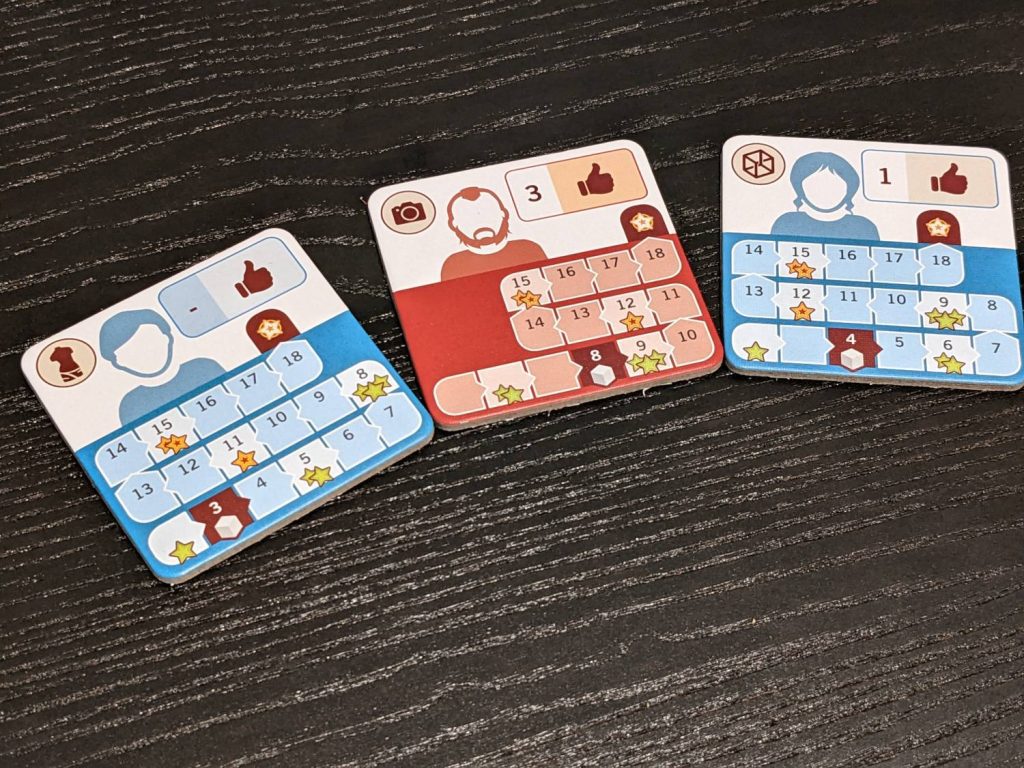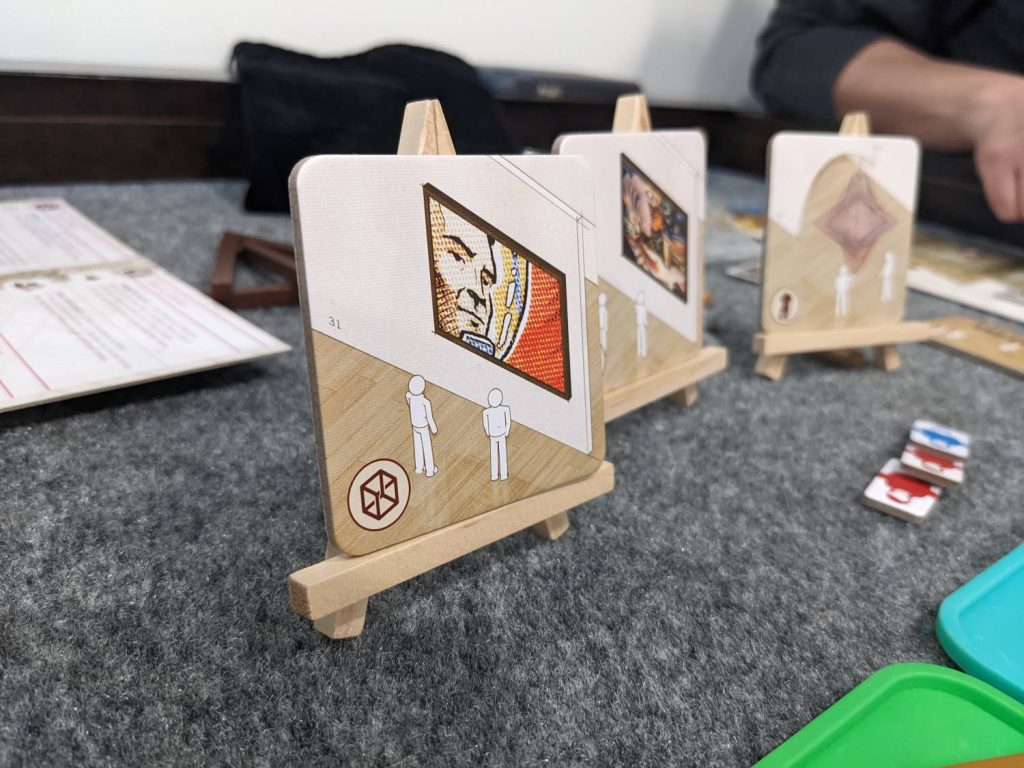If you’re a heavy strategy Eurogame lover, at some point you will meet Vital Lacerda.
Here at Meeple Mountain, we have expressed our love for many of his other designs; On Mars might be the most rules-heavy game I have ever played, but it’s also my favorite Lacerda game. Lately, I have been playing Vinhos: Deluxe Edition, because it’s so much easier to teach while still providing such a grand opportunity to maximize the 13 turns you get for the entire game. Lately, the Lacerda design that hits tables most is Kanban EV, another game that I adore despite how much I hate Sandra.
Oh, that Sandra.
Our team has been working to update the site with reviews and articles about all the games in the BGG Top 100, and when I learned that we had not covered The Gallerist (2015, Eagle-Gryphon Games), I raised my hand to write a piece.
What began as a standard review had to change, because I love The Gallerist too much to talk about it objectively. It’s the most thematic game in my collection, the rules all make sense, the production is gorgeous, and every game of The Gallerist plays out just a little differently. I just love The Gallerist so much!

Only Four Spaces??
Like many games in my collection, the goal of The Gallerist is to make the most money.
The Gallerist introduces players to the art world theme by diving deep: you’ll make money by buying art from struggling artists, then making those artists famous, which makes your art worth a bunch of money. Competing with other players, you also have to find ways to get visitors into the lobby of your gallery, before getting them into the gallery itself to view your art and attract other visitors.
Lacerda created the game by also creating a made-up job in the art world that fits perfectly for the mechanisms the game needs to succeed: a Gallerist. A combination of museum curator, art dealer, and an agent for aspiring artists, players take this role as embodied in a tall Gallerist pawn. This pawn can be moved to occupy one of four Locations to take one of the two actions at that Location.
One of those Locations, the International Market, feels made up, but it’s a game, so we had to have a space where you would send Assistants to basically retire and score end-game points based on where they are located on a large grid. Plenty of other games force players to sacrifice workers to do something similar, but it never quite feels on message. In The Gallerist, the play here is that sending these Assistants off to the International Market helps you increase your Reputation. The reality is that you need points and bonus tiles, and whammo! you get them at a market.

No problem, because the other three Locations are where the bulk of the game is played. You’ve got the Artists Colony, where you can discover a new artist and get in early on building relationships by buying art from those artists and getting it up into your gallery.
You need to have a contract before you can sell an artist’s work somewhere (which aligns perfectly with the Colony), so at the Sales Office Location you can both get contracts and sell work if you align a piece in your gallery with a contract. This gives you the chance at a bonus when you take the contract and an additional bonus when you flip contract cards over later. At the Media Center you can hire more workers on a sliding scale—workers start cheap, and get pricey fast—as well as promote your artists.
Technically, there are eight different actions in the game, but many of them are very easy to teach, which brings us to an interesting element of The Gallerist: the game is exceptionally hard to see a strategy all the way from start to finish, but much like a game of Kanban EV, the teach might take you longer than the game if you are playing at two players. The Gallerist is a big piece of chicken, with lots of rich decision-making space, but once you have it down, you can knock it out in an hour.
Kanban EV, Escape Plan, and The Gallerist are all big games that can be played quickly, in part because you don’t have much time. In Escape Plan, you might only take seven turns, which always blows my mind when I get it to the table. I recently did a refresher play of The Gallerist before writing this piece, and our four-player game only took 2.5 hours, and that included a player brand-new to the game. I love that some of these games feature such a deep strategic approach and can be played so quickly, and with such low downtime.

Kicked Out
Like other Lacerda games, you can take “Executive Actions”, which are often free and are in addition to your regular move action. But, the fun moments in The Gallerist come when you move to a Location and you have to bump another player out of the space.
The bumped player gets a reward: a “Kicked-Out Action.”
The best players of The Gallerist have mastered being in the right place at the right time to increase the number of turns they can take in the game. Kicked-Out Actions give a player the chance to move down on the Influence track—a track that is boosted by having certain types of Visitors in that player’s Gallery when art is sold or bonus tiles are activated—to take another action at the same Location where they were booted.
Guessing where other players are going is huge in The Gallerist. You can also drop an Assistant in your current Location when moving your Gallerist pawn to a different Location (as you have to move your pawn every turn), so that you can have up to two different locations blocked each turn.
That Influence track? It’s also used for short-term loans. You can’t take cash out in The Gallerist, but if you’re short by a buck or two, you can move down on the Influence track to pay for the things you need.
How tight is money in The Gallerist? Very. Especially early on.
It always feels like there’s a chasm between buying that second piece of art then boosting the reputation of your artists enough to sell the art at a profit. But from there, it’s not too bad. In fact, you’ll often see players late in a game of The Gallerist wheeling and dealing once they boost an artist to the point when they are producing Masterpieces and getting cash bonuses because they have so many Investors in their Gallery when they sell a piece of art.
On a scale of 1 to Pipeline (one of the tightest money games I have ever played), The Gallerist is maybe a 6. It’s not awful, but it will make you nervous, especially early on.

The Production: My, Oh My
Part of why I’m a Lacerda fan is because something tells me the guy lives high on the hog. Probably loves spending money. Likes nice restaurants. Drives a fancy car. If there’s a choice between good and great, he always picks exceptional.
The Gallerist is a production. Lavish rulebook. Ridiculous player boards, in the mode of something like Lisboa from a size, weight and function perspective. There’s a real heft to everything in the box.
The Gallerist pawns are beautiful. But not nearly as beautiful as the Work of Art tiles. My version of the game is the Complete Edition, so I’ve got a dozen extra Work of Art tiles and the Scoring Expansion. Those Work of Art tiles…just staring at the tiles is a thing here!
The Work of Art tiles come in four different flavors: photographs, sculptures, digital art and paintings. All the tiles look good, but they look even better on the cute wooden easels that display Works of International Renown, which are available for the players who are highest on that portion of the International Market at the end of the game. I love that one of the tiles has a picture of nothing at all, because that’s art, and only artists get why that’s art, and that’s not me. (Really, that’s a tile you can make art with yourself. I choose to think of the blank slate as pure genius.)
And I haven’t even mentioned the board.
Ian O’Toole’s name seems to be everywhere with these glamour-shot productions; The Gallerist is no exception. I showed the board to a friend of mine who used to work as a curator at the Art Institute of Chicago, and I still remember her looking at it; the board does such a great job of offering a piece of art while also offering a board for gamers to place tokens. With no pieces on the board, this might be the best-looking board I have ever seen.
The money tokens have real weight. (This is true, but I still swap them out for the Clays. I’ve got to stay on brand here!) The player aid is magnificent, and can be used to teach the entire game to new players. The insert is perfect, and putting the game away is almost as much fun as setting it up.
This is world-class production, at a price that comes in below the vast majority of similar games I see coming in through crowdfunding nowadays. $100 goes a long way!

I Love This Game
The Gallerist is always a great time, but I wish I could get it to the table more.
The main problem with The Gallerist is the same with most of Lacerda’s games—I love playing them with players who already know them, but getting them in front of new gamers can be challenging, especially when other players already know the game but have to sit through a 30-minute teach of a game they know well.
If that’s an issue, that’s the only one I have with the game. Otherwise, I love The Gallerist and I’ll happily get it to the table any time someone asks. Every play is a little different and the race to get the most cash is always thrilling. Lacerda does it for me every time!











Add Comment